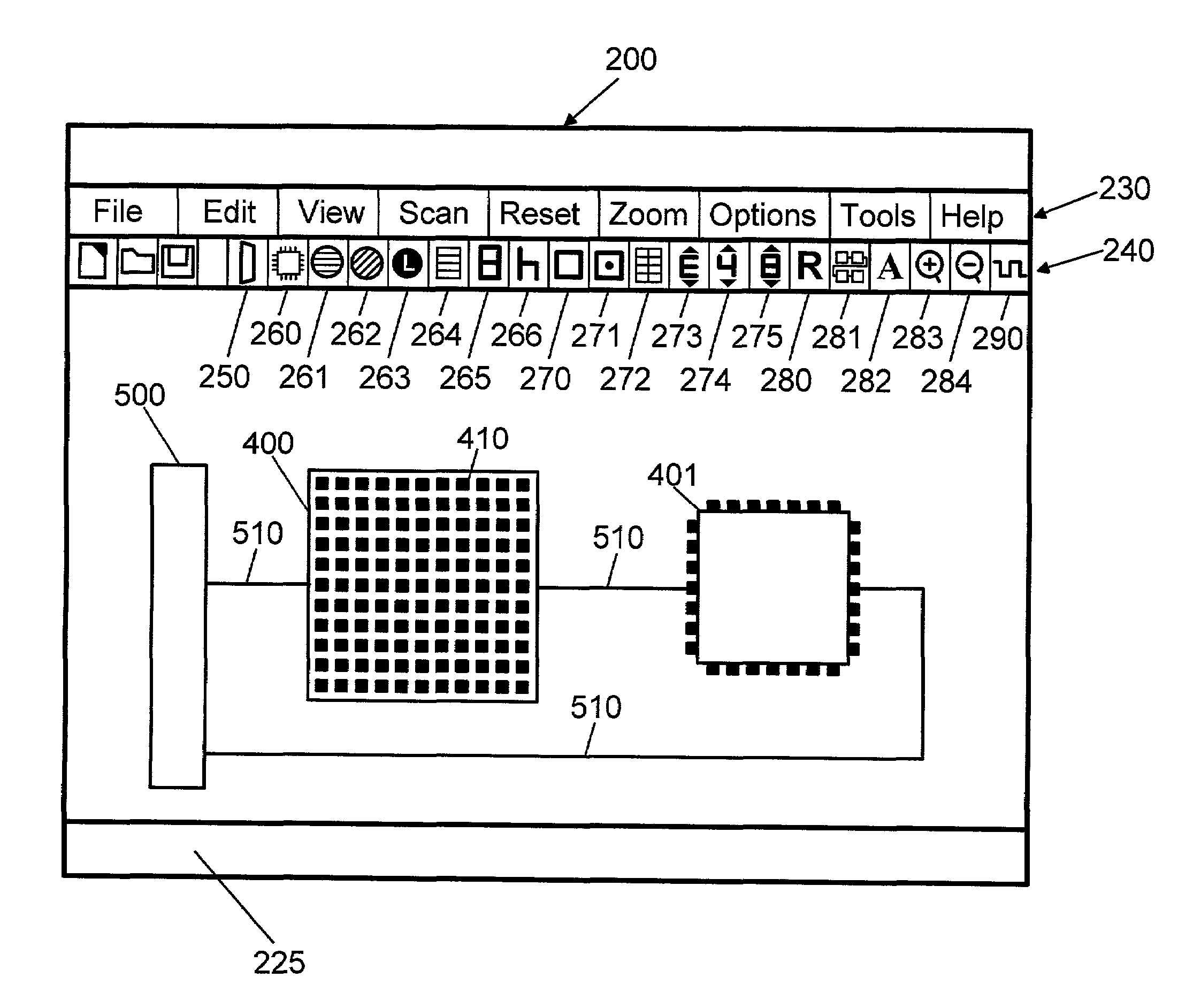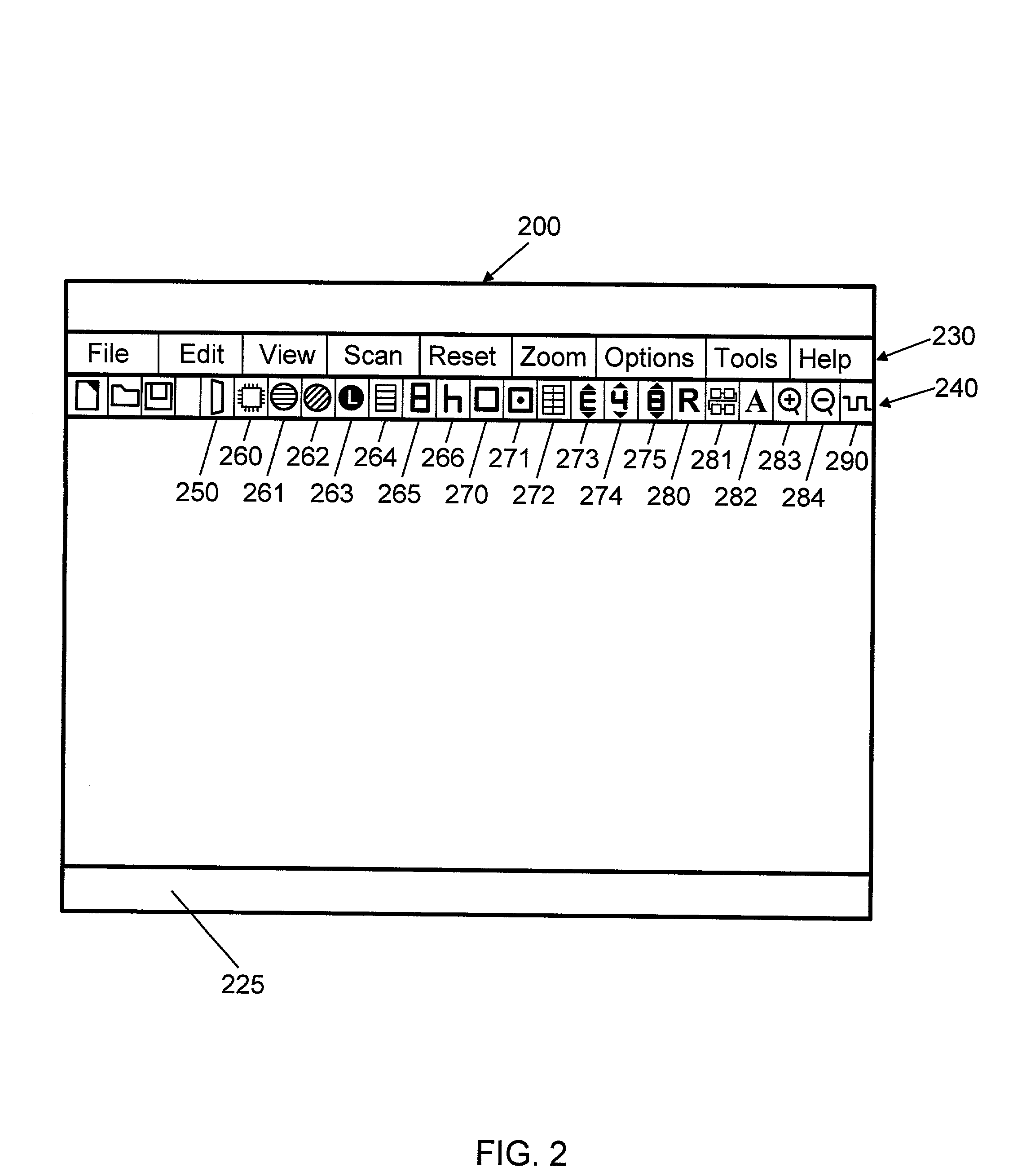Method and apparatus for monitoring and controlling boundary scan enabled devices
a technology of boundary scan and enabled devices, which is applied in the field of integrated circuit and system testing, can solve the problems of inability to test the smaller circuits with traditional test equipment, lack of inexpensive tools, and inability to adopt boundary scan testing in general, so as to achieve simple, effective, and inexpensive manufacturing and production.
- Summary
- Abstract
- Description
- Claims
- Application Information
AI Technical Summary
Benefits of technology
Problems solved by technology
Method used
Image
Examples
Embodiment Construction
—PREFERRED EMBODIMENT
[0031]Detailed descriptions of the preferred embodiments are described in the following paragraphs.
FIG. 1
[0032]FIG. 1 shows a test apparatus for carrying out the preferred embodiment of the invention. A computer 115 of the traditional type including RAM, ROM, processor, etc. is shown operatively connected by wires to a display 105, keyboard 140, mouse 110, printer 150 and interface pod 120 with interface cable 125 making the required IEEE 1149.1 boundary scan connections to the device under test (DUT) 130 through a variety of connection means. Interface pod 120 provides electrical conversion between the computer and the devices under test. Some examples are to provide electrical conversion between the Parallel port, USB port or serial port on the computer to the devices under test. The processor operates to control the program within computer 115, and receive and store data from the input devices and transmit data to the output devices. Notebook computers of sim...
PUM
 Login to View More
Login to View More Abstract
Description
Claims
Application Information
 Login to View More
Login to View More - R&D
- Intellectual Property
- Life Sciences
- Materials
- Tech Scout
- Unparalleled Data Quality
- Higher Quality Content
- 60% Fewer Hallucinations
Browse by: Latest US Patents, China's latest patents, Technical Efficacy Thesaurus, Application Domain, Technology Topic, Popular Technical Reports.
© 2025 PatSnap. All rights reserved.Legal|Privacy policy|Modern Slavery Act Transparency Statement|Sitemap|About US| Contact US: help@patsnap.com



